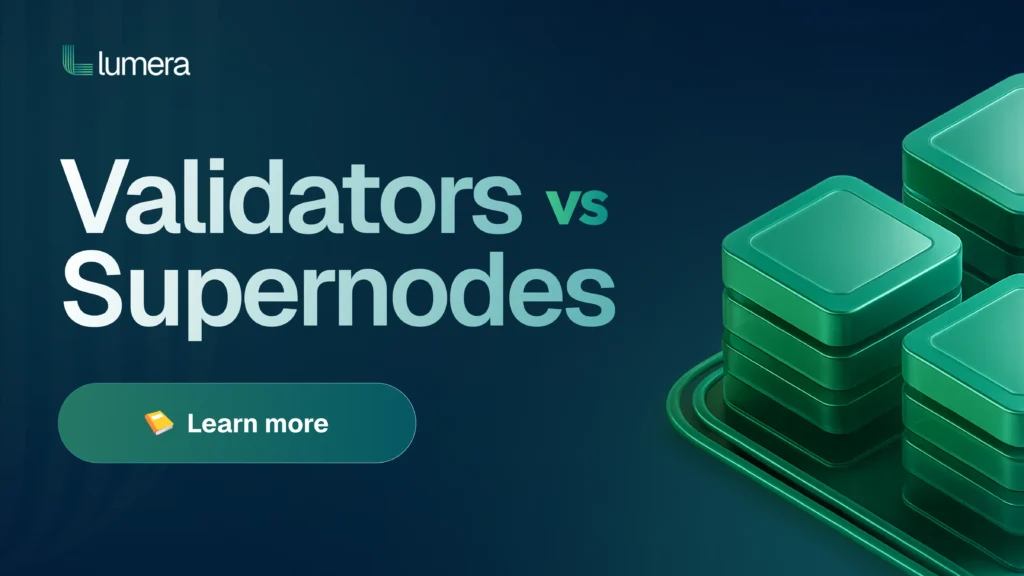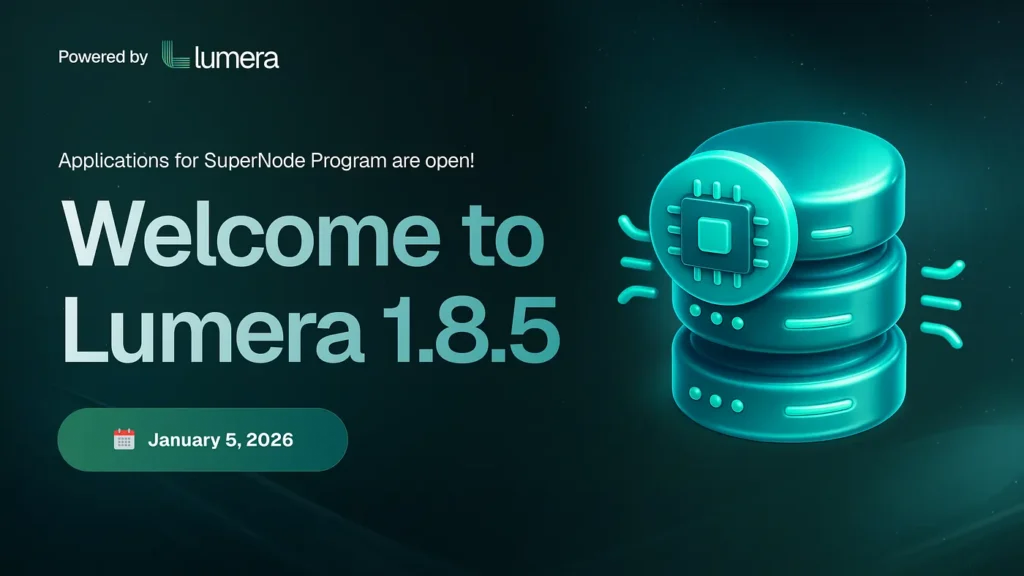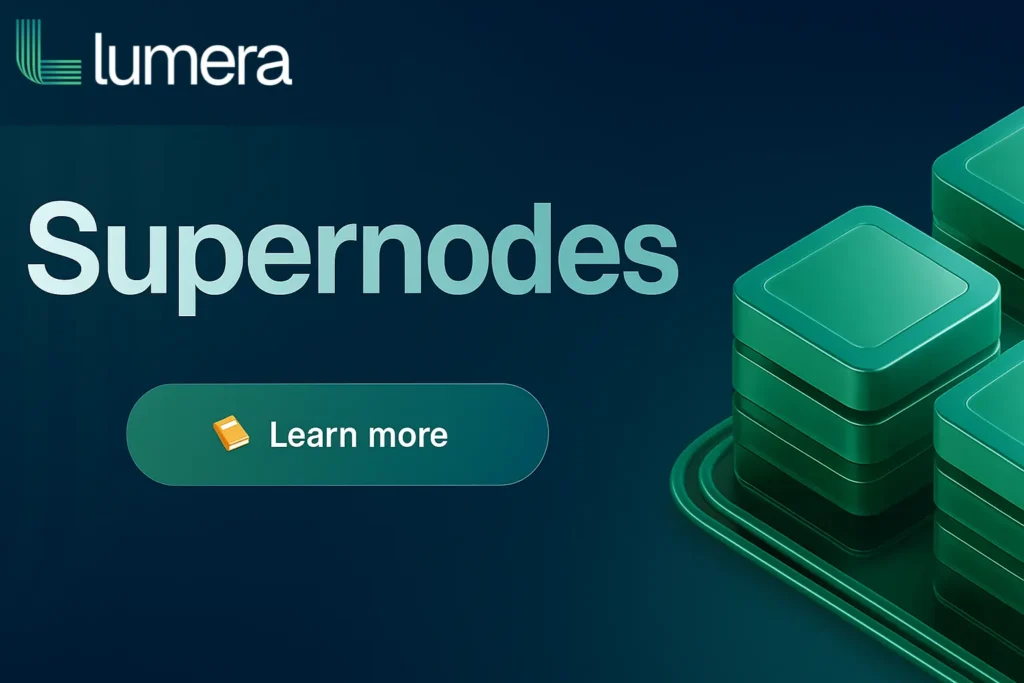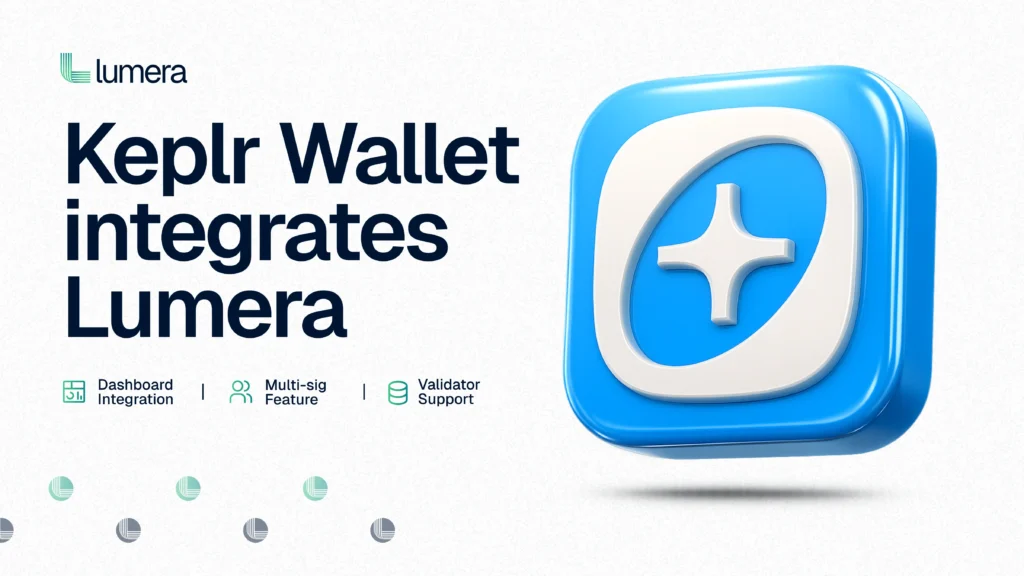Lumera Protocol isn’t just another blockchain. It’s a modular ecosystem designed to power AI computation, permanent storage, and content authenticity verification across Web3. At the foundation of this ecosystem are two complementary roles: Validators and SuperNodes.
Understanding the distinction between them is key for anyone looking to secure the network, power its services, or earn $LUME rewards.
Validators: Securing the Chain
Validators are the backbone of Lumera’s Proof-of-Stake consensus. They:
- Secure the Network → Confirm and validate transactions, keeping the blockchain tamper-proof and reliable.
- Maintain Consensus → Participate in Lumera’s Proof-of-Stake system to ensure the network agrees on the blockchain state.
- Earn Proof-of-Stake (PoS) Rewards → Collect $LUME proportional to their staked amount and uptime.
👉 Anyone with $LUME and the technical capacity to run a node can become a validator and contribute to Lumera’s security.
SuperNodes: Powering Lumera’s Modules
SuperNodes take participation a step further. Instead of focusing only on consensus, they run the decentralized modules that expand Lumera’s capabilities:
- Cascade → Permanent, decentralized storage.
- Sense → Authenticity verification and duplicate detection.
- Inference → Distributed AI compute and agent execution.
👉 SuperNodes earn Proof-of-Service (PoSe) rewards for executing these tasks. If a SuperNode also operates an active validator, it additionally earns PoS rewards — creating a dual-reward structure that incentivizes deeper participation.
Node Configurations in Lumera
Operators can choose their level of involvement depending on technical ability, capital, and role preference. Lumera supports three main node configurations:
1. Validator Only
- Role: Powers the blockchain via Proof-of-Stake consensus.
- Requirements: Must be in the active validator set (top stakers by delegated $LUME) to participate in consensus and earn rewards.
- Rewards: Earns PoS rewards (block rewards + transaction fees) proportional to stake and uptime.
- Best For: Operators who want a straightforward way to help secure the network without the added complexity of running service modules.
2. SuperNode Only
- Role: Operates Lumera’s modular services like Cascade or Inference.
- Requirements: Each SuperNode must be linked to a validator key for accountability, but that validator does not need to be in the active set. This lowers the barrier to entry for those who don’t want to compete directly for validator slots.
- Rewards: Earns PoSe rewards for delivering high-quality service outputs. Does not receive PoS rewards unless paired with an active validator.
- Best For: Operators with strong infrastructure (compute, bandwidth, storage) who want to specialize in powering Lumera’s modules rather than consensus.
3. Validator + SuperNode
- Role: Powers both consensus and modular services (Cascade, Sense, Inference).
- Requirements: Validator must be in the active set. Running the SuperNode requires additional compute/storage to meet service demands.
- Rewards: Earns dual inventives: 1) PoS rewards for consensus + 2) PoSe rewards for executing Lumera’s AI, storage, and authenticity verification tasks.
- Best For: Highly committed operators who want to maximize returns while playing a central role in both securing and expanding Lumera.
👉 Why this flexibility matters:
- Smaller operators can start as SuperNode Only and still contribute meaningfully without competing for validator slots.
- Larger or more resource-intensive operators can combine Validator + SuperNode for dual incentives.
- The system ensures that Lumera stays secure at the consensus layer while also scaling its AI-ready, storage-capable, and authenticity-driven modules.
Reward Structure for SuperNodes
Lumera maximizes alignment between service providers and the ecosystem:
- 98% goes directly to SuperNodes for running AI, storage, and authenticity verification tasks.
- 2% goes to the foundation to support long-term development and ecosystem maintenance.
This ensures SuperNodes are fairly compensated while sustaining future development.
Key Differences Between Validators and SuperNodes
Press enter or click to view image in full size

How Anyone Can Participate
For anyone interested in running a validator or SuperNode, Lumera provides detailed setup guides to make the process straightforward. These guides walk you through.
Whether you’re a first-time node operator or an experienced validator, following these guides ensures a smooth setup and helps you start earning rewards quickly while contributing to the network.
Why Both Roles Matter
Validators secure the blockchain. SuperNodes power its services.
Validators and SuperNodes are both essential for Lumera’s long-term growth and sustainability. Validators maintain the blockchain’s integrity, while SuperNodes expand the network’s capabilities, powering the modular services that make Lumera unique.
By participating in either role, you not only earn $LUME but also help build a self-sustaining ecosystem that supports Web3 developers, dApps, and users worldwide.
Lumera Protocol’s modular design relies on both Validators and SuperNodes to function efficiently. Validators secure the blockchain, and SuperNodes execute the services that make Lumera an AI-ready, storage-capable, and authenticity-focused ecosystem. Understanding these roles is the first step toward actively participating in Lumera’s future.
⚡ In Lumera, Validators keep the chain alive. SuperNodes make it intelligent.
About Lumera Protocol
Lumera Protocol is a high-performance blockchain purpose-built for AI-driven Web3 economies, integrating a Validator-SuperNode architecture to enable decentralized AI services, trustless computation, and secure data storage. Built on cometBFT Proof-of-Stake (PoS), Lumera ensures cross-chain compatibility, efficient AI data sharing, and scalable interoperability.
At its core, Lumera’s SuperNode-powered infrastructure extends beyond validation to support LLM hosting, autonomous agents, task verification, and cross-network communication, with governance driven by a stake-weighted system. Its adaptive tokenomics dynamically adjust inflation based on network participation, ensuring economic sustainability.
Lumera also introduces an Action & Agent Framework, powering decentralized AI services through specialized Actions (e.g., Cascade for storage, Sense for verification) and Agents (e.g., Inference for AI computation). By merging AI, decentralized computation, and blockchain security, Lumera sets a new standard for AI-powered applications and autonomous services in Web3.
For more information on Lumera, follow us on Twitter, Telegram, Discord and visit https://lumera.io.
Website | Twitter | Discord | Telegram | Github | Reddit | Instagram










